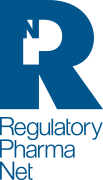INFORMATIVA PRIVACY
– candidati & cv –
Ai sensi dell’articolo 13 del Regolamento UE 2016/679 del Parlamento Europeo e del Consiglio (di seguito “GDPR”)
Al fine di consentire una piena consapevolezza da parte del candidato (“Candidato” o “Interessato”) che trasmette la propria presentazione e il proprio “curriculum” (“cv”) delle operazioni di trattamento che dei dati ivi contenuti sarà svolto da Regulatory Pharma Net S.r.l. (di seguito “RPN” o “Titolare”), nel rispetto dei principi di cui all’art. 5 del GDPR, si rende noto quanto segue.
Finalità
I dati personali del Candidato saranno trattati al fine di consentire la valutazione della candidatura e del cv inviato a RPN al fine di un’eventuale assunzione.
Base giuridica del trattamento dei dati personali “normali” (art. 4.1, GDPR)
Il trattamento dei dati personali “normali” dell’Interessato trova il suo fondamento giuridico nell’interesse legittimo del Titolare ad eseguire una valutazione della candidatura ricevuta anche al fine di un’eventuale avvio di un rapporto di lavoro.
Base giuridica del trattamento dei “categorie particolari” di dati personali (art. 9.1, GDPR)
Il trattamento dei dati particolari di seguito indicati è subordinato al consenso espresso dell’Interessato che potrà revocarlo in ogni momento, senza pregiudizio sul trattamento fino a quel momento eseguito:
- origine razziale o etnica;
- stato di salute;
- appartenenza ad organizzazioni sindacali o politiche;
- convinzioni religiose;
- vita o orientamento sessuale.
La trasmissione (all’interno della lettera di presentazione o del cv) di dati di queste particolari categorie, senza l’espresso consenso al loro trattamento per la finalità sopra indicata, determinerà l’impossibilità per RPN di procedere con la valutazione della candidatura i cui dati saranno cancellati.
Periodo di conservazione dei dati
I dati personali saranno conservati per il tempo strettamente necessario al perseguimento delle finalità suindicate e, in ogni caso, per un periodo non superiore a 3 (tre) anni dalla data della loro raccolta.
Destinatari dei dati
I dati conferiti non saranno in alcun modo oggetto di diffusione, trasferimento e/o comunicazione verso paesi al di fuori dell’Unione europea ma potranno essere comunicati ad agenzie di lavoro interinale o imprese del settore “selezione del personale” con le quali il Titolare mantenga in essere accordi di collaborazione.
Diritti dell’interessato
A norma degli articoli 15, 16, 17, 18, 20 e 21 del GDPR, è diritto dell’Interessato potersi rivolgere in qualunque momento al Titolare, al fine di accedere ai suoi dati personali, ottenerne la rettifica, la cancellazione, la limitazione del trattamento o di opporsi allo stesso, oltre al diritto alla portabilità dei dati.
Inoltre, in caso di violazioni, l’Interessato ha il diritto di proporre un reclamo nei confronti dell’Autorità di controllo dello Stato in cui risiede abitualmente, lavora oppure del luogo ove si è verificata la presunta violazione.
Titolare del trattamento
Il Titolare del trattamento è la società RPN – Regulatory Pharma Net S.r.l. con sede in Corso Italia, 108 – 56125, Pisa (Italia).
I dati di contatto per informazioni riguardanti l’utilizzo dei Suoi dati e, eventualmente, per esercitare i diritti suindicati, email: privacy@regulatorypharmanet.com.




